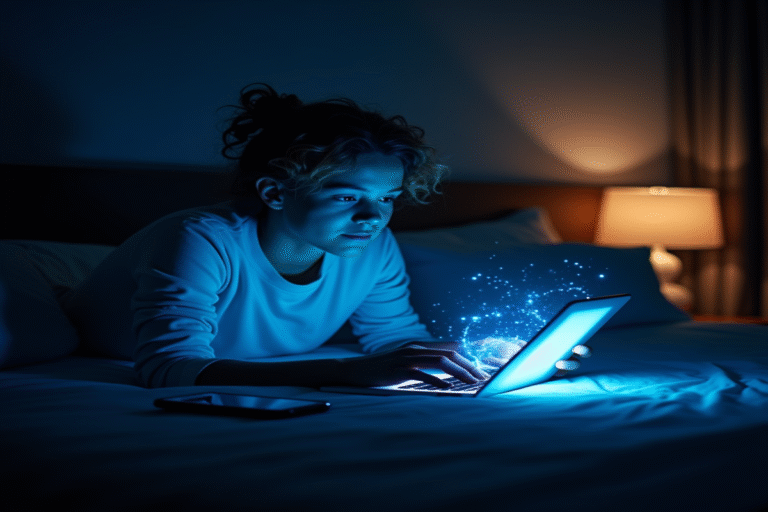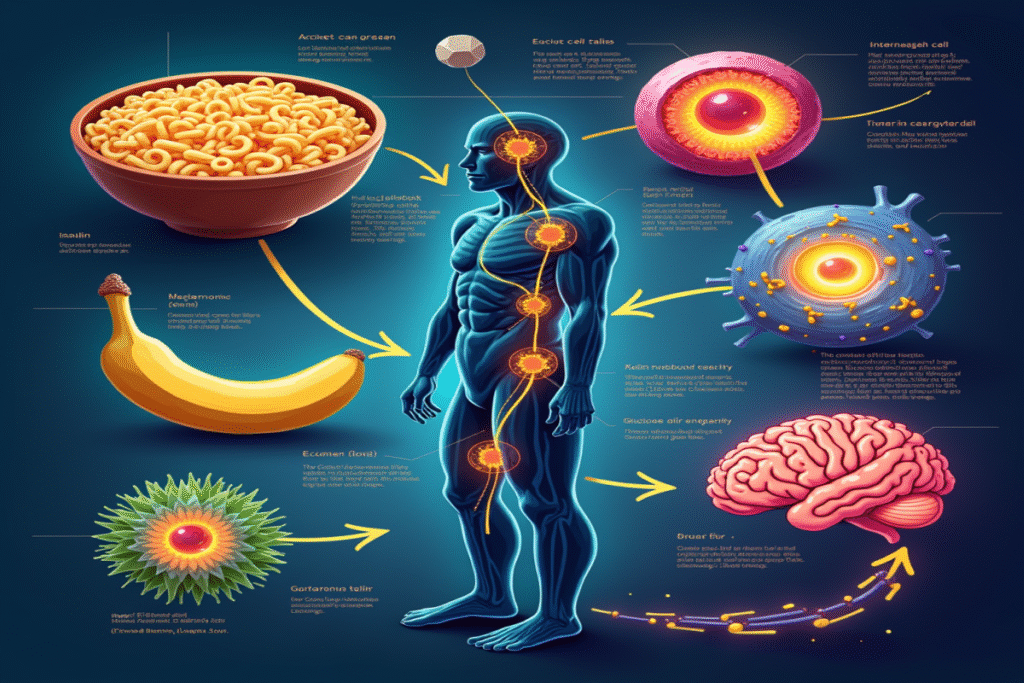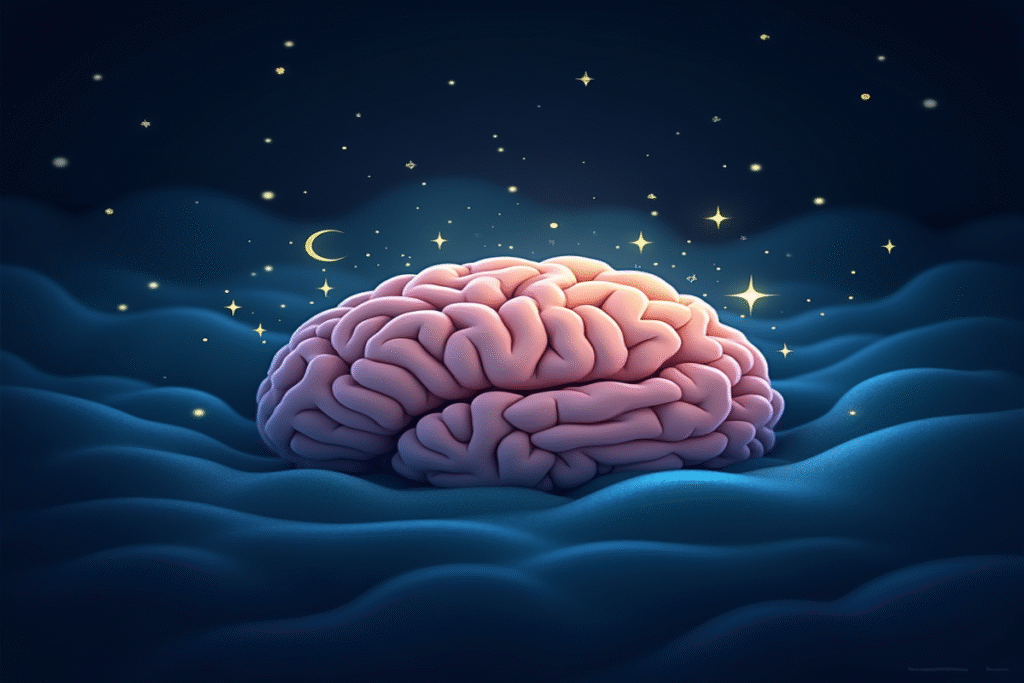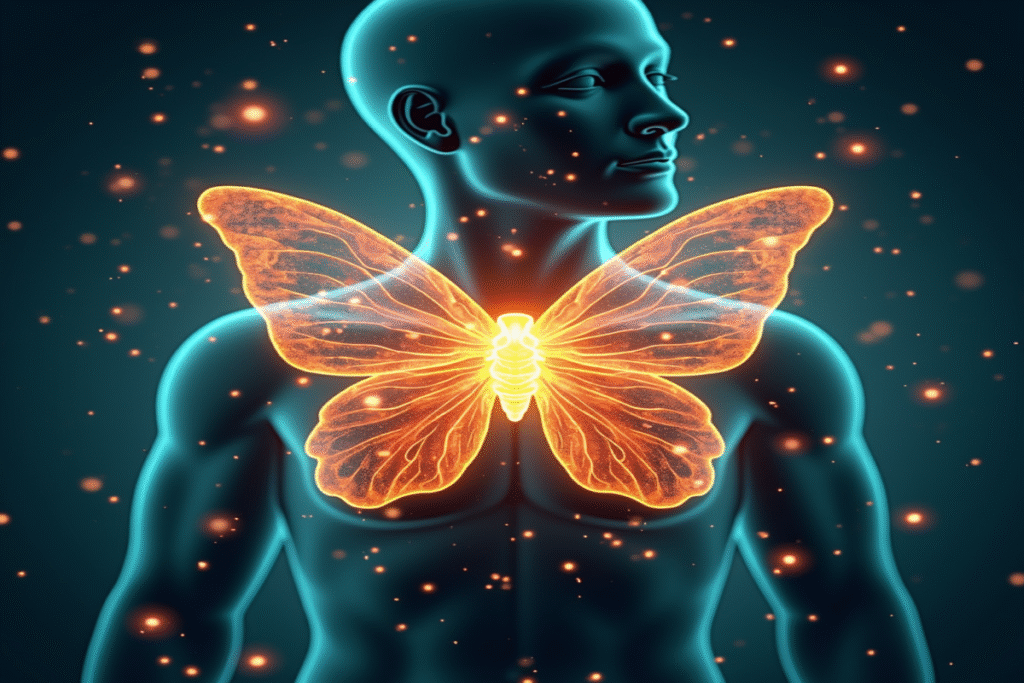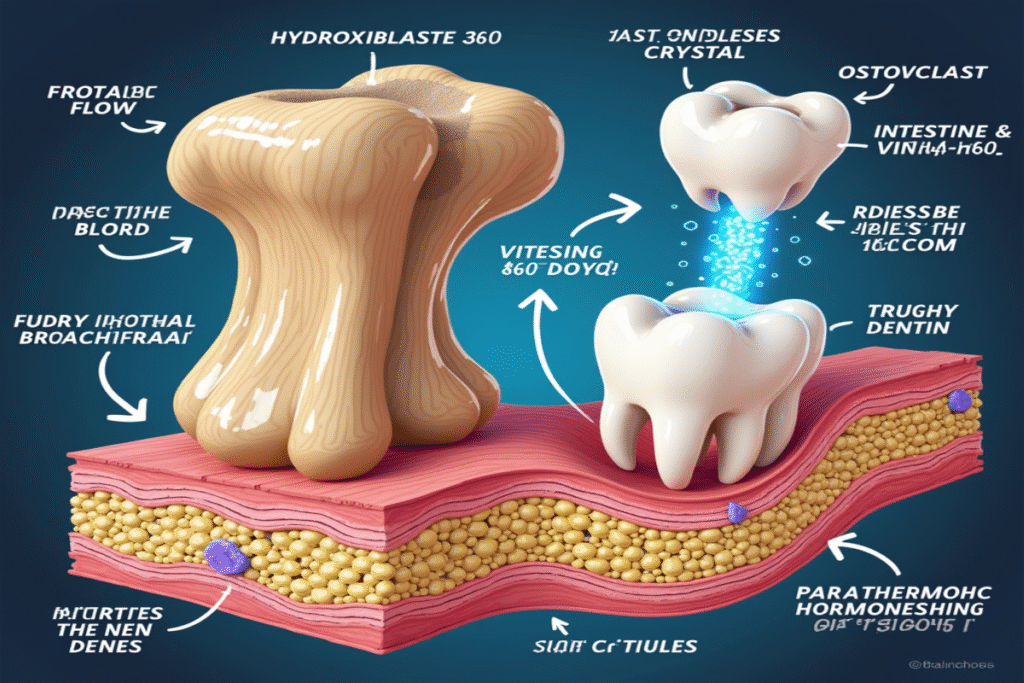In an age when the average person spends over 7 hours a day looking at digital screens, the invisible impact of that glow has become a growing health concern. While we scroll, swipe, and binge-watch, something is happening in our brains that could be sabotaging our most precious recovery time: sleep.
The Science Behind the Blue Glow
Not all light is created equal. The visible light spectrum contains different wavelengths and energy levels, with blue light having some of the shortest wavelengths (approximately 380-500 nanometers) and the highest energy. While the sun is our largest source of blue light, digital devices and LED lighting have greatly increased our exposure—especially at night, when our ancestors would have experienced only firelight or darkness.
What makes blue light unique? Its short wavelength and high energy allow it to reach the retina at the back of your eye. There, specialized photoreceptors called intrinsically photosensitive retinal ganglion cells (ipRGCs) detect blue light and send signals straight to your brain’s master clock in the hypothalamus.
The discovery of these special photoreceptors in 2002 revolutionized our understanding of how light affects the body, explains chronobiologist Dr. Samer Hattar. They don’t help us see images, but instead tell our brain whether it’s day or night.
Your Internal Clock: Disrupted
For millions of years, the human circadian rhythm—our internal 24-hour clock—has been synchronized with the rising and setting sun. Blue-rich morning light signals “wake up!” while the absence of blue light in the evening triggers production of melatonin, the hormone that prepares your body for sleep.
When you expose yourself to the blue light from your phone, tablet, computer, or TV in the evening, you are essentially telling your brain: it’s still daytime, stay alert! Research shows this exposure can suppress melatonin production by up to 50% and delay its release by about 90 minutes, making it harder to fall asleep and reducing sleep quality.
The Ripple Effects of Poor Sleep
The consequences extend far beyond feeling groggy the next day:
- Cognitive function: Memory formation, problem-solving, and creativity all suffer with insufficient sleep.
- Emotional regulation: Sleep-deprived individuals show a 60% increase in emotional reactivity.
- Metabolic health: Just one week of insufficient sleep can alter glucose metabolism in a way that mimics prediabetes.
- Immune function: People who sleep less than 7 hours are nearly 3 times more likely to catch a cold when exposed to a virus.
- Long-term health: Chronic sleep disruption has been linked to increased risk of cardiovascular disease, obesity, and even certain cancers.
The Digital Dilemma: Real-World Evidence
A 2015 study published in the Proceedings of the National Academy of Sciences compared the effects of reading on a light-emitting e-reader versus a printed book before bed. The results were striking: e-reader users took nearly 10 minutes longer to fall asleep, had half the amount of REM sleep, and felt less alert the next morning—even when both groups spent the same amount of time in bed.
In another experiment, researchers at Harvard Medical School compared blue light to green light of equal brightness. Blue light suppressed melatonin for twice as long and shifted circadian rhythms by twice as much (3 hours versus 1.5 hours).
Practical Solutions: Taking Control of Your Light Environment
The good news? You don’t need to give up technology entirely. Here are science-backed strategies to minimize blue light exposure while still living in the digital age:
Tech-Based Solutions
- Night mode settings: Most modern devices offer blue light filters. On iOS, it’s called Night Shift; on Android, it’s Night Light; on Windows, it’s Night Mode. Enable these to automatically shift your screen to warmer tones after sunset.
- Blue-blocking apps: Apps like f.lux, Iris, or Twilight can dynamically adjust your screen’s color temperature based on the time of day, often with more customization than built-in settings.
- Blue light blocking glasses: A 2017 study in the Journal of Adolescent Health found that teenagers who wore blue-blocking glasses while using devices before bed had significantly higher melatonin levels. Look for glasses that block wavelengths between 380-500 nm.
- Screen protectors: Physical blue light filters can be applied to devices, though their effectiveness varies by brand.
Behavioral Strategies
Technology helps, but behavioral changes often make the biggest difference:
- The 20-20-20 rule: Every 20 minutes, look at something 20 feet away for 20 seconds. This reduces eye strain and reminds you to take breaks.
- The 2-hour rule: Try to avoid screens for 2 hours before bedtime. If not possible, aim for at least 30 minutes screen-free.
- Outdoor mornings: Getting morning sunlight helps reset your circadian rhythm. Just 15-30 minutes of morning light can greatly improve nighttime sleep quality.
- Bedroom boundaries: Make your bedroom a technology-free sanctuary with warm, dim lighting.
Environmental Modifications
Your home lighting matters:
- Swap bulbs: Replace bright white/blue LEDs with warm white bulbs (2700-3000K) in areas you use in the evening.
- Dimmer switches: Use dimmers to reduce light intensity as the evening progresses.
- Smart lighting: Systems like Philips Hue can automatically shift from energizing blue-rich light during the day to relaxing amber tones in the evening.
The Fascinating Exception: Some Blue Light Can Help
While evening blue light disrupts sleep, daytime blue light exposure is actually helpful. It boosts attention, reaction times, and mood while helping regulate your circadian rhythm. The problem isn’t blue light itself—it’s blue light at the wrong time.
Researchers at the University of Basel found that people exposed to bright, blue-enriched light during the workday reported better sleep quality and were more productive than those under standard office lighting. The lesson: embrace blue light during the day, but shift to warmer, dim lighting in the evening.
Beyond Sleep: Other Effects Worth Knowing
Blue light’s impact goes beyond sleep. Some research suggests prolonged exposure may contribute to digital eye strain and might be associated with age-related macular degeneration, though more studies are needed to know the long-term effects.
Surprisingly, blue light therapy is used to treat certain conditions, including seasonal affective disorder (SAD) and some circadian rhythm disorders. It’s about getting the right light at the right time.
Finding Your Balance
Our relationship with screens is complex—they connect us to information, entertainment, and each other. The goal isn’t to fear technology but to use it wisely. By understanding how blue light affects your body, you can make simple choices to enjoy the benefits of the digital world while protecting your sleep.
This science reveals our deep connection to natural rhythms. Despite all our technology, our bodies still respond to light and darkness as we did long before the first screen brightened our nights. Honoring these ancient patterns can help us find balance in our modern lives.
